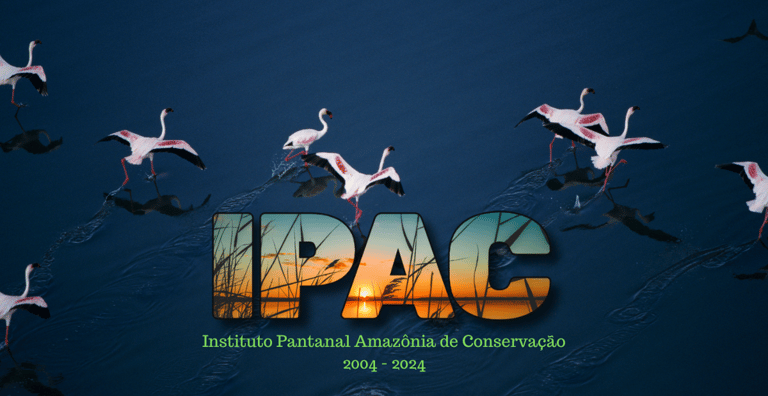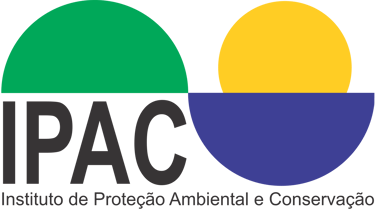TANGARÁ DA SERRA-MT . BRASIL 55 65 99987-8717 IPactangara@GMAIL.COM
Socioeconomic Survey
Vale do Sol II Community
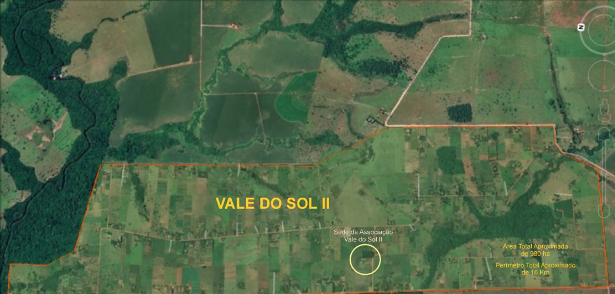

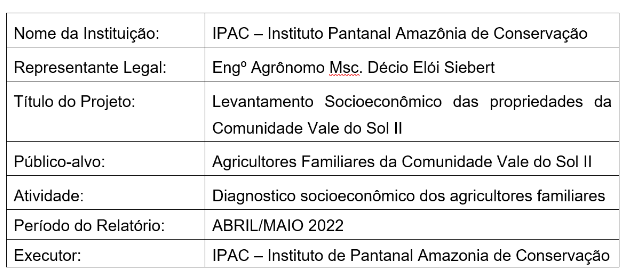

Data collection from producers in the Vale do Sol II community began with visits and forms filled out. The farmers completed the forms in the first contact, covering all the requested questions, and there was no need to return to the visits at another time or observe and develop any other action for data collection. All values provided by the producers and used in the graphs below are the annual average for 2022 that each producer provided up to the time of collection. One difficulty encountered is the fact that the farmers do not keep accounting records of their expenses and income, making it difficult to measure precise values regarding the individual production of each item surveyed. The entire Diagnosis was constructed based on the reports of the producers interviewed. Another detail that made it difficult to obtain a more satisfactory result was the fact that many properties are without any activity and, when we surveyed neighboring residents, we were informed that they are residents who have residences and activities in the city and who travel to their properties on weekends. Overall, a percentage of around 82% was reached, that is, 40 occupied properties, with around 10 owners refusing to participate in the interviews.
Associative Participation
During the data collection for the diagnosis, it was noted that residents were generally dissatisfied with a series of problems that were occurring, both at the association level and with the measures that should be taken by the government. When asked about their expectations regarding the acquisition of the lots, they reported that they expected the association to take greater action to address the problems they are facing in managing the land more rigorously. Some reported an interest in selling due to a lack of resources to invest, others faced serious problems with the lack of water, and still others faced problems with the difficulty of marketing their products and even a lack of government incentives to finance the harvests. Despite this dissatisfaction, most farmers (55%) still maintain a link with the current association, as can be seen in graph 1.
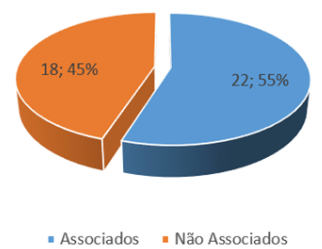

Property titles
According to the graph, the vast majority of settlers have been owners since the beginning of the settlement, living on the property, and there is no illegal possession of property in the area.
These are producers who came from other regions and acquired their lots legally, although some do not yet have the definitive title to the property. Only one couple is a tenant and another is taking care of the place because the owner is undergoing medical treatment.
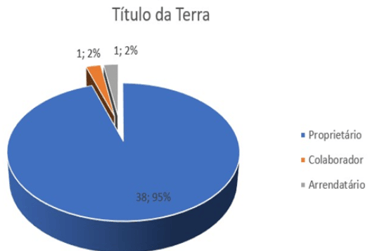

People residing on the same property
It was observed during the interviews that each property housed, in most cases, more than one person within its space. In this sense, the question was asked how many people lived in the same place, whether in the same house or in different houses built on the same property.
From the data collected, it was possible to verify that only one person lived in 7 properties, representing 17% of the total. This is because the couple usually has children in school, so the wife is forced to live in the city to take care of these children. Of the total, 22 properties are inhabited by a couple (55%), 6 properties are inhabited by 3 people (15%), usually a couple and a small child who has not yet entered school age. In 3 properties, 4 people live (8%), usually two couples, and in 2 properties (17%) there are 5 people living.
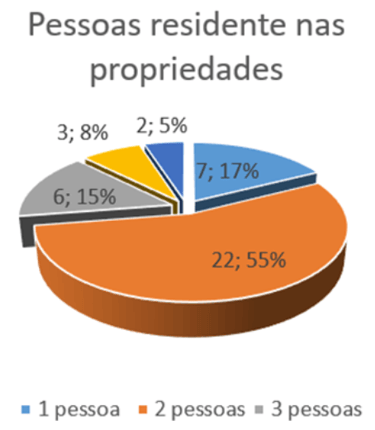

Health
Most producers are between 45 and 65 years old, with some health problems such as hypertension and diabetes in the family, which reduces the time they spend working in the fields because they cannot be exposed to intense heat.
A total of 40 properties were visited, 29 families (72%) had some type of pre-existing illness and another 11 families (28%) reported not having any type of health problem.
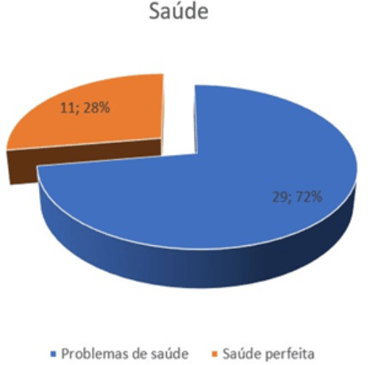

Supplementary income
Families were asked whether any member has any type of activity that generates income outside the property to supplement the household budget. From the graph we can see that only 10 families (25%) have someone who provides external services, outside the property, to supplement the household budget or because they have some other profession where they provide occasional services. The other 30 (75%) families live exclusively from subsistence production or production for retail and wholesale trade (95%).
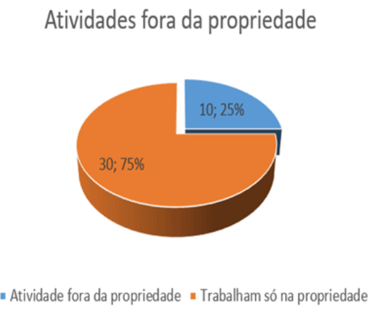

Another source of income from the property
A similar question was asked to find out whether the property had any other source of income, such as machinery rental, feed milling, etc.
From the answers expressed in the graph, it can be concluded that 14 properties (35%) have some source of extra income, such as tractors, tractors and implements that generate some type of income, and 26 properties (65%) live exclusively from production.
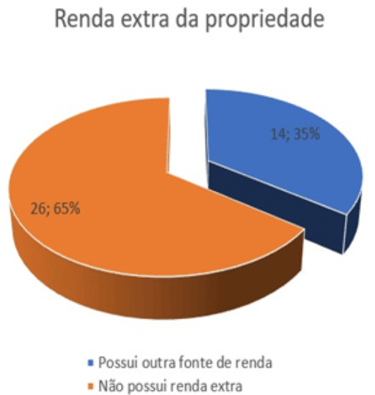

Use of property
This research surveyed 40 properties measuring 4.8 hectares each, totaling approximately 192 hectares, excluding a percentage corresponding to the legal reserve area. In this sense, each owner was asked how he or she uses this space. Based on the study of the 40 properties analyzed, the following results were obtained: 109.9 hectares (57%) are used as pasture, and this is justified by the fact that it does not require much labor to care for the animals and the return is constant through milk and dairy products, produced by the herd. In addition, it is easy to sell in case of need. The remaining 82.1 hectares (43%) are used for planting vegetables, fruits, legumes and spices. According to calculations made using Google Earth, the Vale do Sol II community has an area of 980 hectares, of which only 192 hectares were surveyed. The remaining 797.4 Ha are areas for sale, closed areas preventing research, permanent preservation areas, roads, unproductive areas, dams, the association's headquarters and some private reserves.
Physical structures on properties
The main houses are made of masonry and some structures are still made of wood, but the vast majority are built of masonry, with an average of 40% without any type of finishing such as plastering and flooring, and some are very well built. Of the total, 2 are made of wood (5%) and 38 are made of masonry (95%).
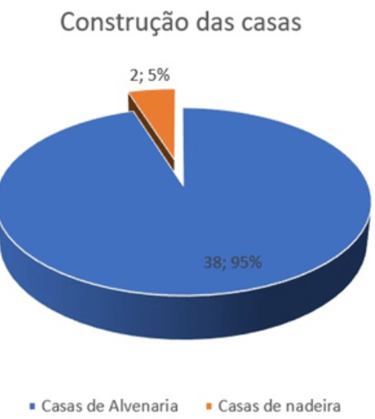

Other structures
Most properties, with the exception of two or three, have a small or medium-sized structure for raising chickens and pigs, as well as sheds for storing tools, production and/or equipment used on the property.
In the survey, we found that 20 properties (35%) have a shed or warehouse, 10 owners have a pigsty for fattening pigs for their own use and selling whole animals, and 27 properties have a chicken coop for egg production and for the family's own consumption.
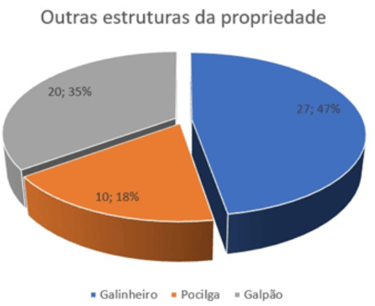

Water use
In this research item, the owners were asked about the origin of the water that supplies the residence, the other structures on the property (chicken coop, pigsty and vegetable garden) and, in the case of irrigation, if there was any. Of the 40 properties, 22 (51%) have an artesian well and 18 (42%) use a country well and only 3 (7%) properties use the semi-artesian well for the house and the country well to supply the other structures on the property.
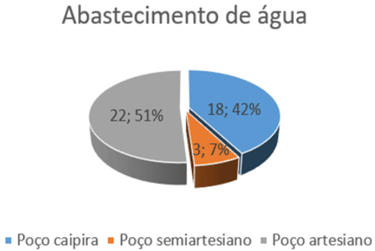

Production
The survey was conducted among the producers interviewed, to find out what they produced on their properties and the monthly sales value of these products. As for the value, it was difficult to measure because they do not keep records of their production. What they harvest, they immediately deliver to the middlemen, most of the time, at their doorstep.
As for production, we can highlight the following products:
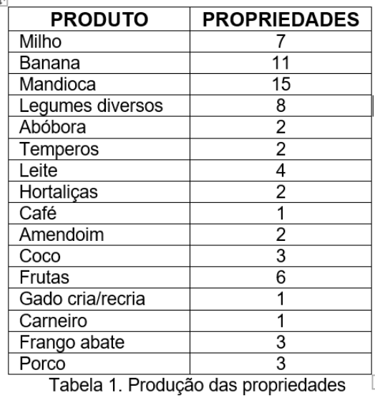

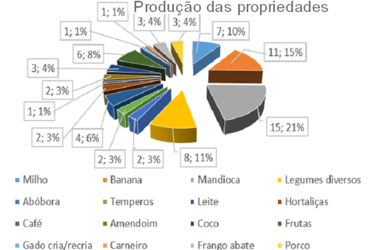

Production expenses
Consumption varies greatly within a property and is not always linked to production, as can be seen during the interviews. Sometimes it involves the maintenance of poultry and animals for the family's own consumption.
In addition to the production costs in the table above, some producers had to spend on veterinary medication for the maintenance of their herds, totaling R$1,670.00.
Looking at the overall cost, the following consumption was found:
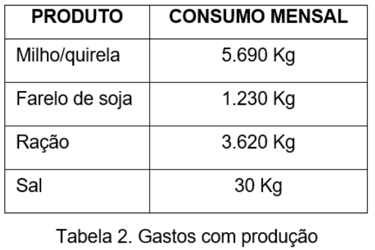

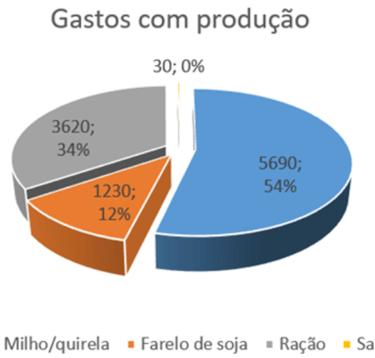

Family maintenance expenses
From the data collected, the following conclusion was reached regarding family maintenance expenses: food is the most important at 39%, followed by other expenses, which mainly include fuel costs, then electricity, which represents 14%, and finally health insurance costs (12%) and medical treatments, exams, hospitalizations and the purchase of medicines (11%).
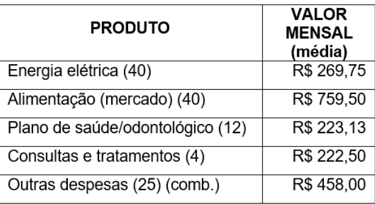

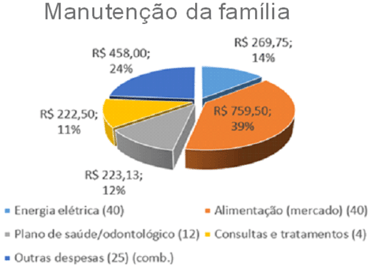

Machines and implements
When asked about the machines and implements on the property, it was noted that most of them did not have any, so they were asked whether the machinery that worked on their land was their own or third-party equipment. From the responses, we extracted the following data: 6 (x%) have their own tractors and implements, 27 (x%) hire third parties to work their land, and 7 (x%) do not use machines because they do not plant large quantities of land.
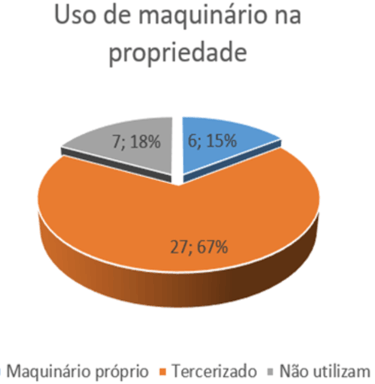

Environment
Regarding issues related to preservation, it can be noted that most of these families have clear notions about sustainability and, in their own words, have defined and made clear their concern about the rational use of the land's resources. Many producers said they transmit these notions of sustainability and care for the environment within their family, in groups of friends and gatherings, in discussions and in guidance to employees and neighbors. They have already participated in lectures and courses on the environment and recommend them.
Despite this notion that they have, they still lack guidance on some fundamental points to achieve better results. One example of this is the disposal of the garbage produced on the property. There is a lack of guidance and support from public agencies in the collection of this garbage and, because of this, many still burn and bury it because they are unable to take it to the recycling bin.
To conclude this interview, they were asked if they have dreams for the future of their property and most said they do, despite the difficult situation they are going through due to a lack of incentives. Some, with better financial conditions, said they could make their dreams come true in a year or less, others said that if nothing happened in terms of agricultural policy, it would take at least five years to reach their goals, and still others said that if they did, it would take at least 10 years of hard work.
And finally, they were asked if there was hope for change so that they could grow in their aspirations and what should happen to accelerate this process. To help, some items were presented, such as valuing agriculture and farmers, government incentives, increasing consumption, creating and strengthening cooperatives, and modernizing production methods. The most frequently mentioned item was more active government participation, creating incentives for small and medium-sized producers. In second place was valuing agriculture and farmers by raising awareness of their importance in bringing food production into homes. In third place, they mentioned the importance of creating cooperatives that would take care of production in a serious and transparent manner, providing security to these associated farmers.
Results achieved
The main family producers in the municipality were identified;
Data collection on the owners;
Complement the results of future workshops;
The problems that most affect residents were identified.
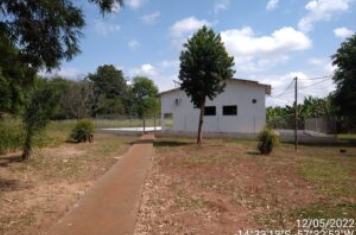

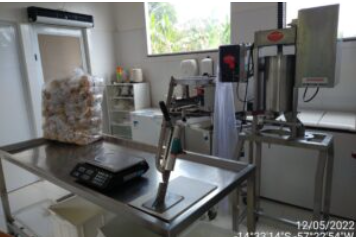

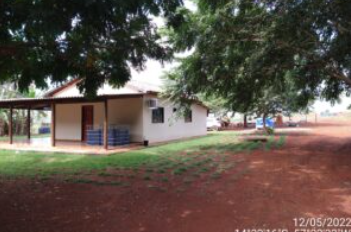

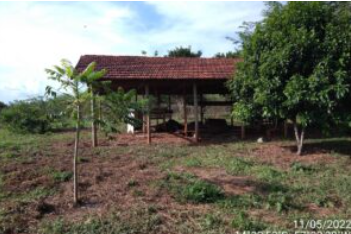

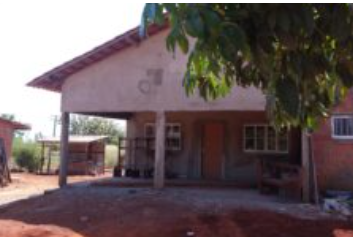

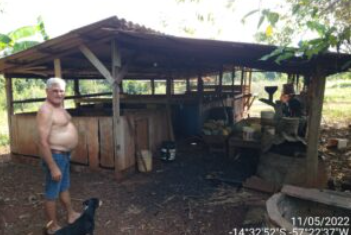

WORKSHOPS
First Workshop - "Wailing Wall"
The “Wailing Wall” activity. Developed by IPAC – Instituto Pantanal Amazônia de Conservação, using the methodology of the Cultivating Good Water Program of Itaipu Binacional, through its representative and speaker Jair Kotz, it had the support of the Public Prosecutor's Office of the State of Mato Grosso and the Vale do Sol II Family Farmers Association.
This methodology covers social, community, organizational, associative and production aspects.
In this work, the participants reported the difficulties that the Vale do Sol II Community has been facing, especially with regard to social, production, economic, health, education, infrastructure and public institutions' services regarding the availability of these services to the community.
The farmers attended in large numbers and had the opportunity to discuss with the speaker and even among themselves, “laments” that, systematized, will serve as a basis for the development of the next workshops or even a new, more specific survey, if necessary, to support new actions.
At the end of the meetings, a coffee break was served, which allowed for a more informal conversation with some people from the community and where the Speaker could receive suggestions for solving some more serious problems.
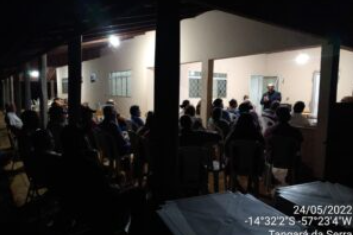

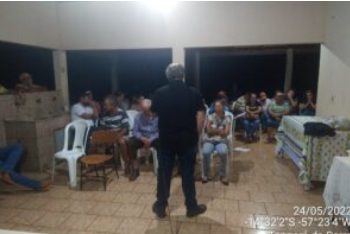


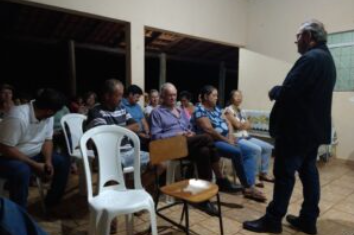
Second Workshop - "Future of the Community"
The “Future of the Community” activity, like the “Wailing Wall” workshop, was developed by IPAC – Instituto Pantanal Amazônia de Conservação, using the methodology of the Cultivating Good Water Program of Itaipu Binacional, through its representative and speaker Jair Kotz, and had the support of the Public Prosecutor's Office of the State of Mato Grosso and the Association of Family Farmers Vale do Sol II.
This methodology seeks to provide solutions to the problems presented in the first workshop. It covers social, community, organizational, associative and production aspects.
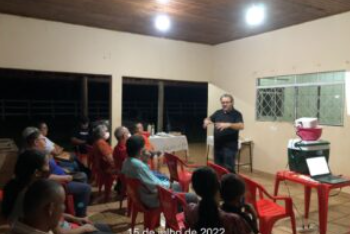

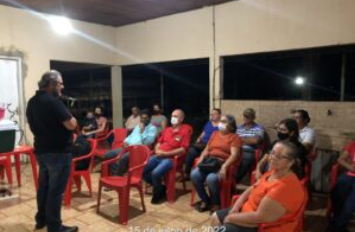

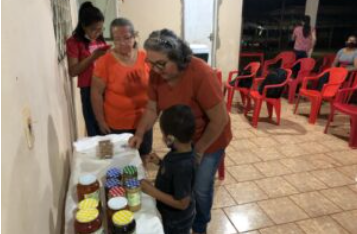

Institute for environmental preservation and conservation
We defend environmental and cultural preservation.
CONTACT
contato@ipac.org.br
55 65 99987-8717


